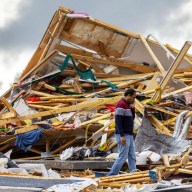Last week’s comments by Alberta Transportation Minister Luke Ouellette about a road being “world class” got me thinking about what kinds of transportation projects make the most impact. I’m afraid I disagree with the minister — roads don’t make the cut, their alternatives do.
The minister’s comments were inspired by the 44-kilometre, $1-billion northern half of our ring road officially opening.
“It’s the largest single transportation project in Alberta’s history,” Ouellette said at a press conference, adding, “This new ring road is world class.”
The road is estimated to be travelled by 30,000 to 40,000 vehicles. From what I’ve heard, it has cut some commutes in half and improved travel times for truckers.
Undoubtedly, some form of road improvement was needed in the north. But if we’re talking about world class, I think we could aim a little higher. And I hope this ring road won’t go down as the largest single transportation project in Alberta’s history.
Cities aren’t known for their roads. The cities that consistently make the cut as most livable (as rated by Mercer with results published in Business Week, The Economist and other reputable media) are those with efficient and widely used alternate transportation options, cities like Copenhagen, Paris and Tokyo.
That’s why last week’s announcement that SNC-Lavalin has won the bid to build the west leg of the LRT is much more noteworthy than another stretch of land turned to pavement.
This firm just finished building Vancouver’s Canada Line, linking downtown Vancouver to Richmond and the airport. This addition to the SkyTrain system has helped secure Vancouver’s spot as world class.
The west leg of our LRT is going to make Calgary more livable by taking our public transit up a few important notches.
This leg introduces Calgarians to underground and elevated LRT stations. The world’s best rail systems are either underground, like London, Paris and New York, or elevated above ground like Chicago, Bangkok and Vancouver. That’s because these systems don’t have to interface with traffic — they can operate without drivers and the underground systems, subways, are additionally independent of weather.
Obviously, we’ll still need drivers, and a few stops without traffic or weather interference do not a delay-free system make.
But with an anticipated ridership of 90,000, I am confident that more Calgarians will soon join me in saying our public transportation is world class and memorable.
















